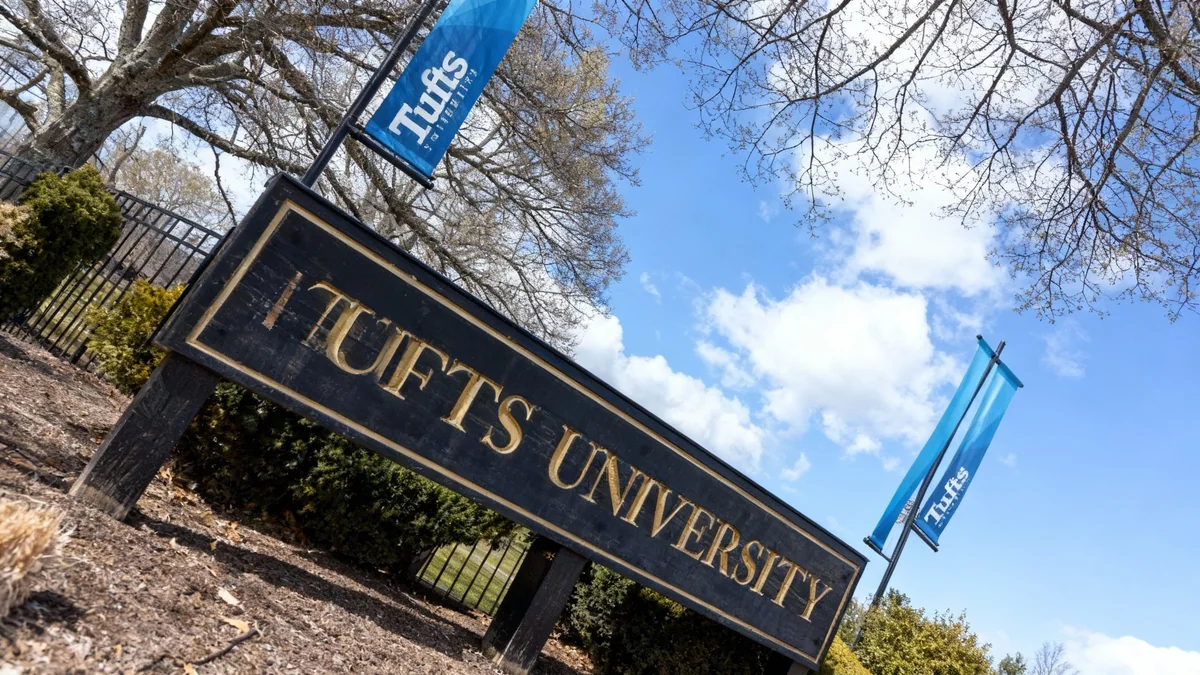A high school in Washington, D.C. is exploring a novel approach to address its significant student absenteeism problem by considering a plan to pay students a weekly stipend. Digital Pioneers Academy in Southeast Washington recorded that over 50% of its high school students had more than 10 unexcused absences during the last academic year, prompting school leaders to propose a direct cash payment program as a potential solution.
Key Takeaways
- Digital Pioneers Academy in Washington, D.C. is facing a severe attendance issue, with over half its students chronically absent.
- School leadership is considering a program to pay students $50 each week to encourage better attendance.
- The proposed payments would have no specific conditions attached, functioning as a form of unconditional cash transfer.
- This initiative reflects a broader trend of using financial incentives to address complex social issues in education.
A Critical Attendance Problem
Digital Pioneers Academy, a public charter school located in Southeast Washington, is confronting a challenge that affects schools nationwide: chronic absenteeism. According to recent data, the school's situation is particularly acute. More than half of its high school students missed over 10 days of school without an excuse in the previous school year.
This level of absenteeism is often defined as chronic and is linked to a range of negative educational outcomes. Students who are frequently absent are more likely to fall behind academically, have lower graduation rates, and face greater challenges in post-secondary education and the workforce. The school's leadership has identified this as a primary barrier to student success and is seeking innovative ways to reverse the trend.
By the Numbers
According to the U.S. Department of Education, a student who misses just 10% of the school year, which is about 18 days, is considered chronically absent. The data from Digital Pioneers Academy indicates a significant portion of its student body exceeds this threshold.
The Proposed Financial Incentive Program
In response to the attendance crisis, the school's administration has put forward an unconventional proposal: a direct cash payment program. Under this plan, students would receive $50 each week. A key feature of the proposal is that the payments would be distributed with no strings attached, meaning students and their families could use the money as they see fit.
The total amount a student could receive over a standard 36-week school year would be approximately $1,800. The underlying theory is that this financial support could help alleviate some of the economic pressures that contribute to absenteeism. These pressures can include the need for students to work part-time jobs, lack of funds for transportation, or the inability to afford basic necessities that support school readiness.
By providing a consistent, unconditional stipend, the school hopes to create an environment where attending school becomes a more viable and prioritized option for students facing economic hardship.
The Rationale Behind Cash Incentives
The idea of paying students to attend school is part of a larger conversation about the role of financial incentives in education. Proponents argue that such programs can be a powerful tool for addressing the non-academic barriers that prevent students from succeeding.
Addressing Root Causes
Many experts believe that chronic absenteeism is often a symptom of deeper issues, such as poverty, family instability, or lack of access to resources. A direct cash payment can empower families to solve their own problems, whether that means paying for a bus pass, buying groceries, or covering an unexpected bill that might otherwise require a student to miss school to work.
Unconditional Cash Transfers
The concept is similar to Unconditional Cash Transfer (UCT) programs, which have been studied globally as a tool for poverty reduction. Research on UCTs has often shown positive impacts on health, education, and economic stability for recipients. The school's proposal applies this model to a specific educational challenge.
Mas Washington, the founder of Digital Pioneers Academy, has previously spoken about the need to address the holistic needs of students. The proposal aligns with a philosophy that recognizes that students cannot focus on learning if their basic needs are not met. The weekly payment is seen as a direct investment in the stability of the student's life outside of school, which in turn is expected to improve their engagement inside the classroom.
Potential Benefits and Criticisms
While the proposal is innovative, it is also likely to generate debate. The use of financial incentives in education has both strong supporters and vocal critics, each raising valid points about the potential outcomes.
Arguments in Favor
Supporters of the program suggest several potential benefits:
- Improved Attendance and Engagement: The most direct goal is that the financial support will reduce the barriers causing absences, leading to more students in class every day.
- Reduced Financial Stress: The weekly stipend could lessen the economic burden on students and their families, improving overall well-being and allowing students to focus more on their studies.
- Empowerment and Agency: Unconditional payments give students and families the autonomy to address their most pressing needs, fostering a sense of responsibility and trust.
Potential Concerns
Critics, however, raise important questions about the long-term effectiveness and ethical implications of such programs:
- Intrinsic vs. Extrinsic Motivation: A primary concern is that paying students for attendance might undermine their intrinsic motivation to learn. Critics worry that students may come to view education as a transactional activity rather than an opportunity for personal growth.
- Sustainability: The financial viability of such a program is a major question. Funding sources, long-term costs, and what happens if the funding is discontinued are all critical considerations.
- Fairness and Equity: Questions may arise about how such a program is implemented. For instance, should payments be universal, or should they be targeted based on attendance records or financial need?
"When you introduce an external reward for an activity, you risk diminishing the inherent interest in that activity. The goal should be to make school engaging enough that students want to be there, not because they are paid to be."
Looking Ahead
The proposal at Digital Pioneers Academy is still in the discussion phase. School leaders will need to address questions about funding, implementation logistics, and how to measure the program's success. If implemented, it would serve as a significant case study for other school districts grappling with similar attendance challenges across the country.
The outcome of this experiment in Southeast Washington could provide valuable data on whether direct financial intervention is a viable strategy for improving educational outcomes in communities facing systemic economic disadvantages. The core question remains: can a weekly payment of $50 truly change a student's educational trajectory? For the leaders at Digital Pioneers Academy, it is a possibility worth exploring.





